The best exercises for weight loss to boost your metabolism and build muscle
The best exercises for weight loss boost your metabolism, build muscle, and burn fat


Leon Poultney
Regularly practicing the best exercises for weight loss can help you build muscle, boost your metabolism, and burn fat to hit your fitness goals. These moves are varied, too, making it easier to do them regularly without getting bored.
Whatever your weight loss goals, these exercises are an efficient way to work out, blending compound exercises with high-intensity movement to raise your heart rate and build full-body muscle.
Once you've finished a session, it's also worth blending yourself a post-workout smoothie with one of the best protein powders for weight loss. This will boost your recovery and build muscle without adding extra fat and sugar to your diet.
The best exercises for weight loss
These six moves are some of the best exercises for weight loss as they work muscles all over your body and raise your heart rate to help burn fat.
Start with 6-8 repetitions of each (unless aiming for a specific time) and gradually increase as you get stronger. This kind of repetition training is what research published in Medicine & Science in Sports & Exercise suggests to be best for weight loss.
Of course, what food you eat regularly will also influence your weight loss results. That's why it's good to eat nutrient-dense options over fast food and hit your protein levels, which you can top up with one of the best protein powders for weight loss.
1. Kettlebell swings
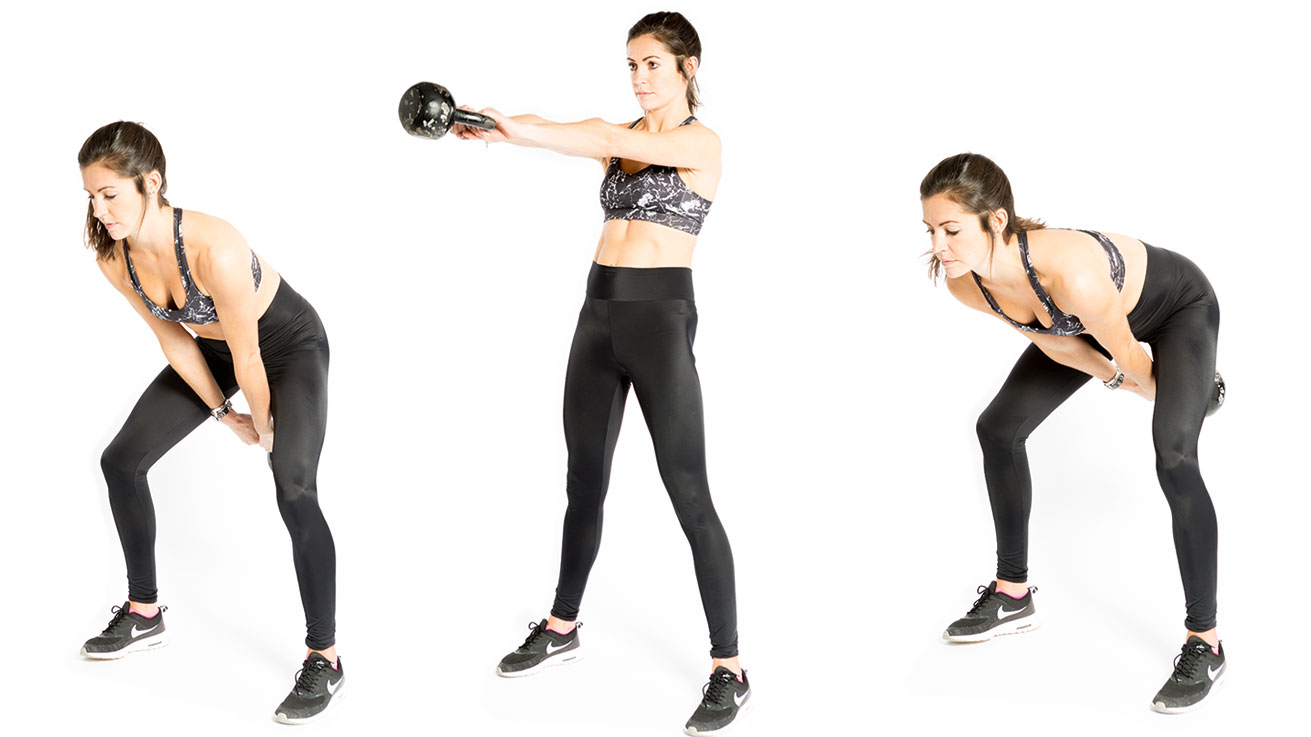
Not only will you strengthen large muscle groups, like the glutes, quads, abs, and shoulders, this multi-faceted move will also get the heart rate spiking, therefore goading the body to burn fat as an energy source.
Start your week with achievable workout ideas, health tips and wellbeing advice in your inbox.
Aim to perform as many swings as you can in a 30-60 second time period and repeat this for 3-4 sets for maximum fat burn.
- Place a kettlebell between your feet, which should be set at around hip-width apart. Bend at the hips as if you were performing a squat and grab the handle with both hands.
- Stand upright with core engaged, shoulders pinned back and down towards your butt with a nice, straight back. Now rock back slightly to create enough momentum to swing the kettlebell up and out in front of you, arms straight and fully extended. Squeeze the glutes, thrust your hips forward, and brace the core to assist in this movement and drive through the heels
- Now allow momentum to swing the kettlebell back through your legs, remembering to bend at the hips before repeating the movement.
2. Jump rope
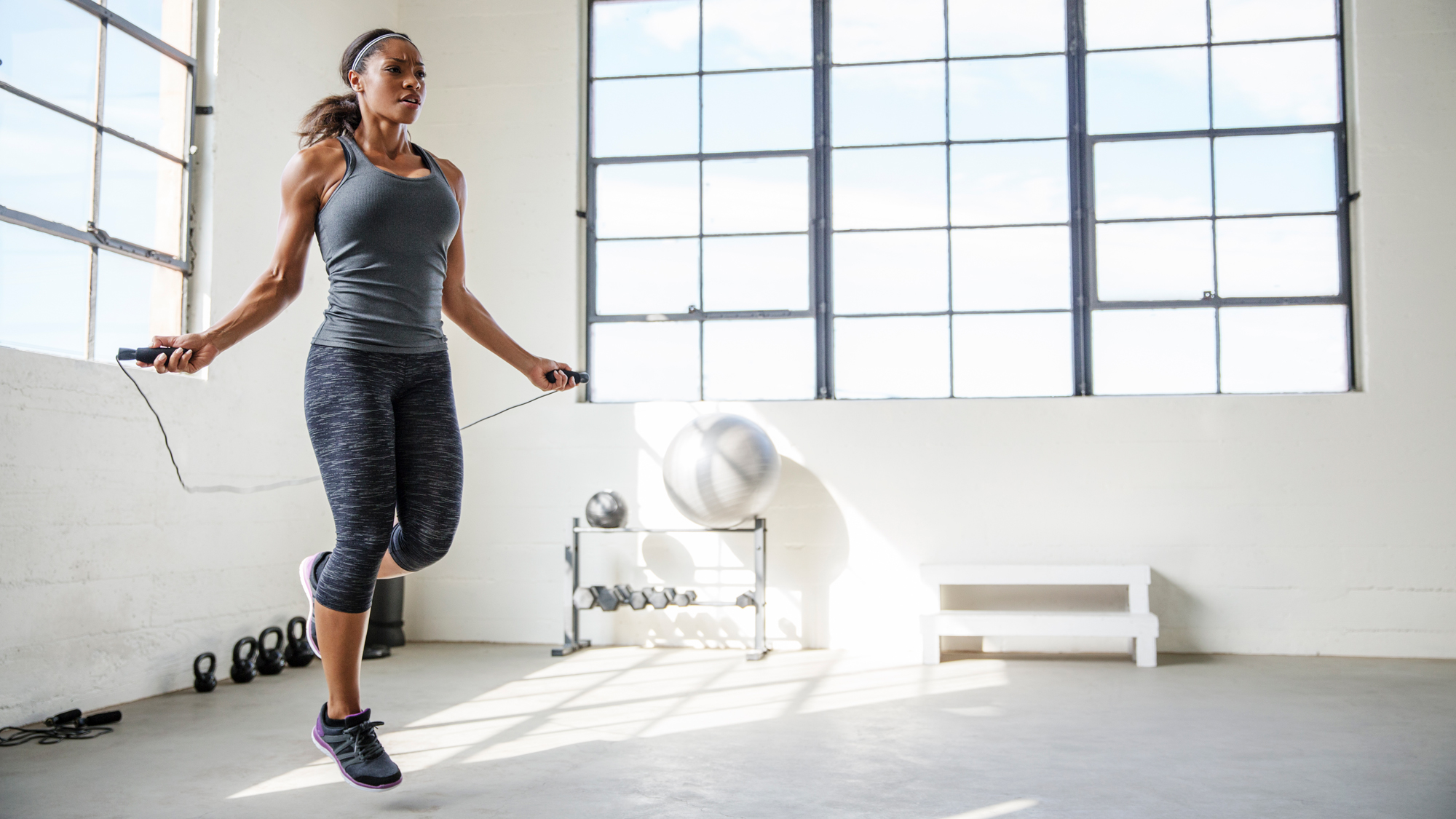
There’s a reason why you see boxers and MMA fighters throwing shapes with a skipping rope during training: it’s an absolute monster for elevating the heart rate, promoting cardiovascular endurance, and building cat-like levels of coordination, as well as fast, agile feet.
It doesn’t matter your level of skipping ability, as any prolonged rope practice is great for burning fat and strengthening the upper body. Look to skip for around 45 seconds at first and slowly increase this time as the weeks progress or even give this twenty-minute jump rope workout a go.
- Grab both ends of a rope and flick the wrist so the rope travels in front of your body and jump over to complete the motion.
- Over time, attempt to speed up the skipping, try single and double foot jumps, swap feet throughout, and even try some explosive double-unders, where the rope passes underneath you twice before the feet land.
3. Burpees
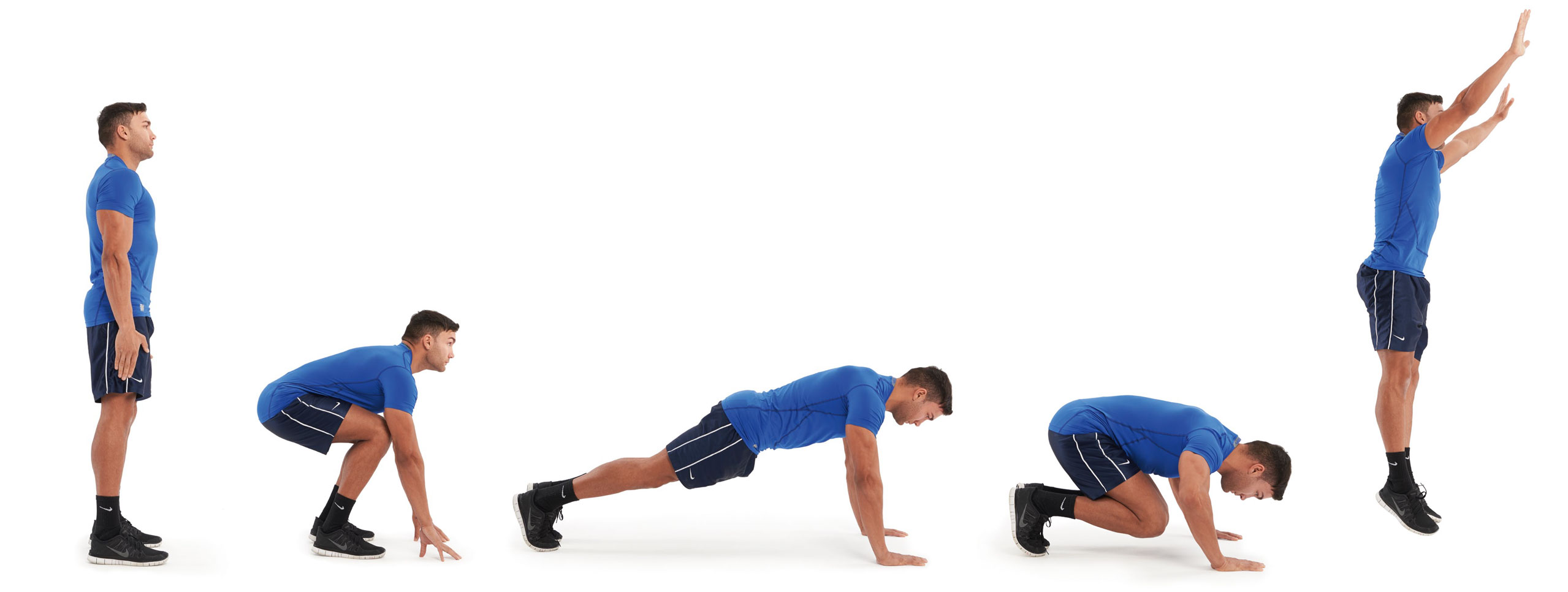
Learning how to do a burpee is an excellent (if much feared) way to incorporate this compound movement into your workout. It involves almost every muscle group and sends the heart rate soaring, which boosts your metabolism (the amount of energy you burn throughout the day).
- From a standing position, drop down as if you were about to perform a press up. Explosively kick your legs backwards so your thighs are parallel with the floor and the chest, shoulders, and arms are braced to take your body weight.
- Don’t pause here, but instead draw your feet back under your chest before explosively leaping into the air, keeping your arms by your sides.
- Repeat this immediately, without pause, for as many times as you can muster in a 30-second period. Aim to increase the reps and session time as the weeks progress.
4. Dumbbell deadlift
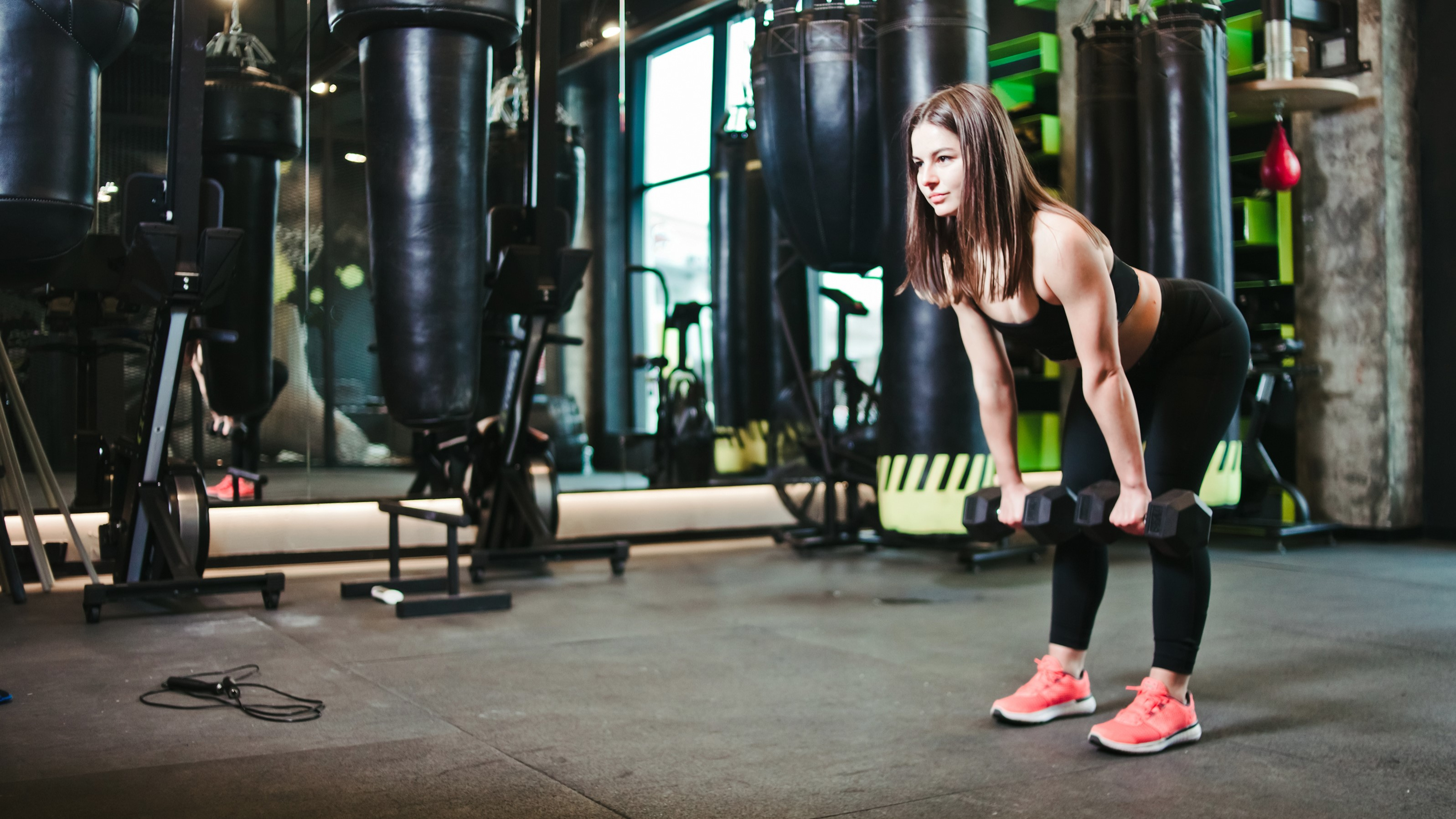
This compound exercise targets the big-hitting muscles in the upper body, while the quads and hips offer support from the lower body. This combination of large muscle groups gets the heart pumping, while strengthening and the upper body.
- Stand tall with feet just wider than shoulder-width apart with a dumbbell in front of each foot.
- Use your core and glute muscles to hinge forward, moving your hips back as if sitting into a chair, with bent knees, straight spine, and raised chest.
- Reach down to grip the dumbbells, with your palms facing shins and arms shoulder-width apart.
- Begin to lift the weights in front of your shins and return to standing with your chest raised, hips and knees straight.
- Reverse the movement to lower the weights back to the ground. That's one repetition. Aim for 5-12 reps.
5. Step-ups
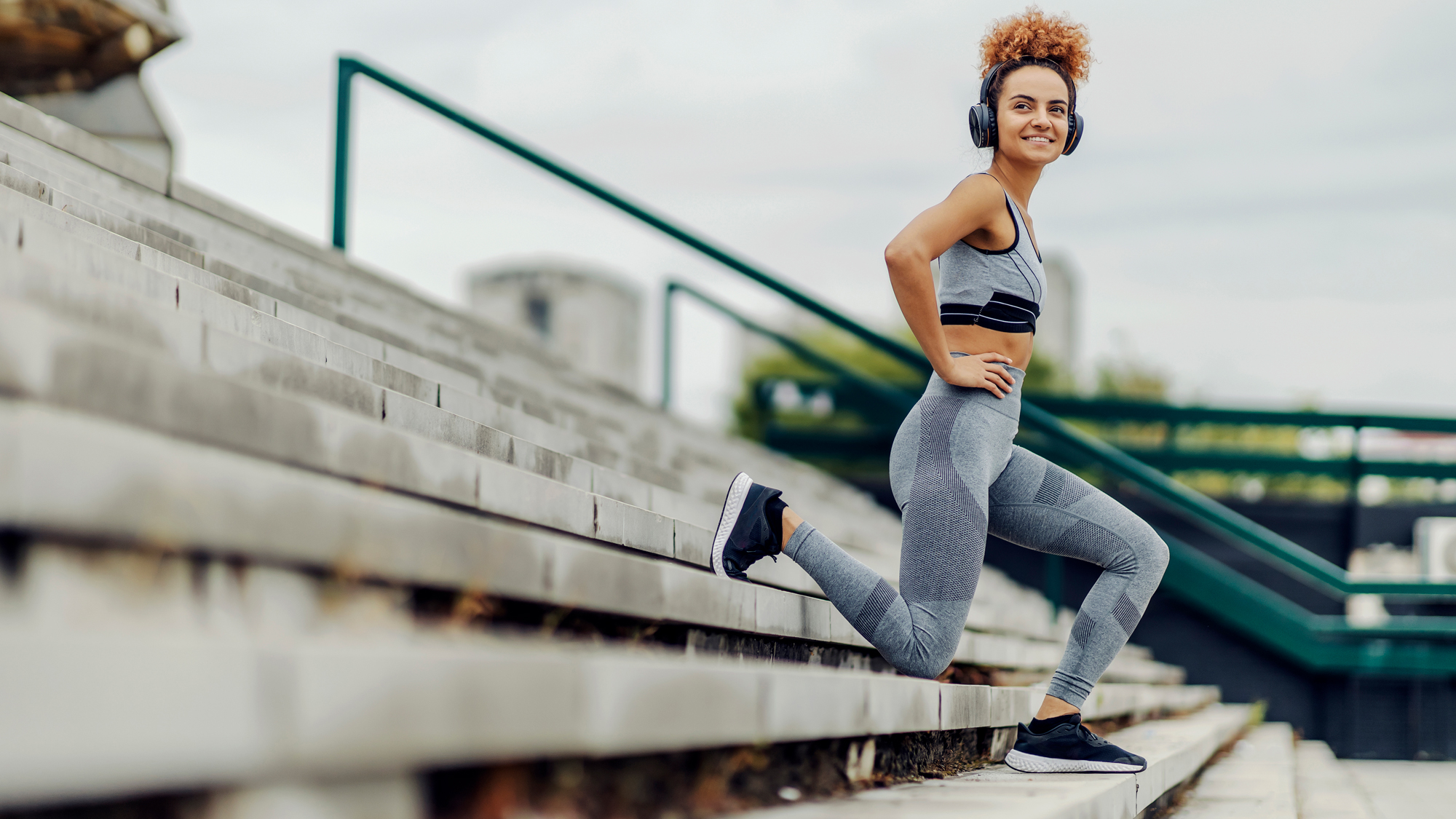
These single leg exercises force the glutes, quads, and calves to work hard to raise your body up onto the platform. Plus, the small stabilizing muscles engage to keep you stable as you step. If you want to increase the intensity, perform the exercise with a dumbbell or kettlebell in each hand.
- Find a solid platform, like a stable bench, box, or anything sturdy that’s around knee to hip-high.
- Place your right foot onto the platform and drive through the heel until both feet are together on the surface and you are standing upright. Step backward with the left leg and repeat on that side, swapping legs throughout.
- Continue alternating legs and aim for as many repetitions as you can in 45 seconds.
6. Slam balls
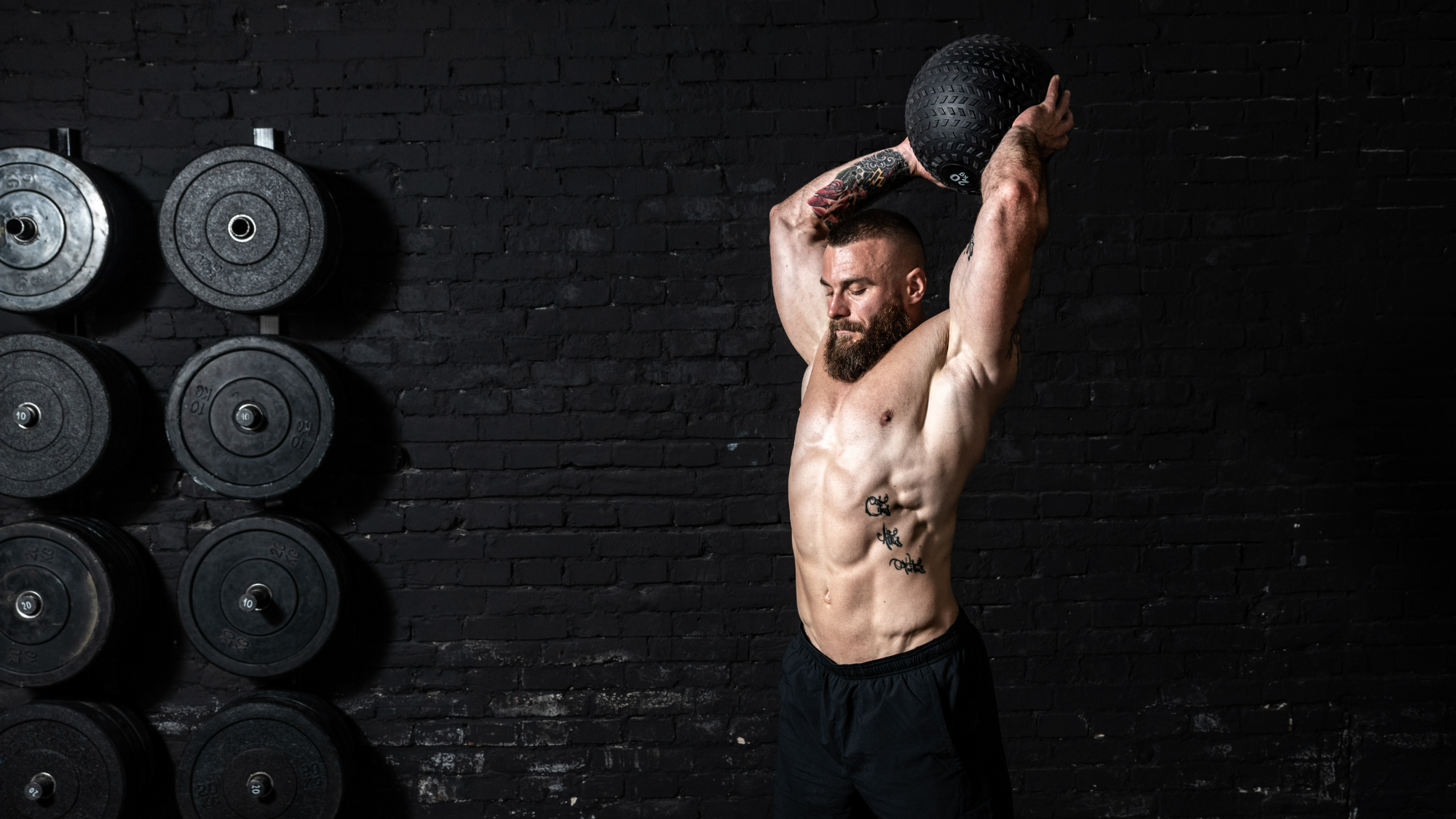
Throwing a ball into the ground is quite satisfying anyway, but this exercise is a great workout for your upper and lower body, and raises your heart rate to burn energy and boost your metabolism.
- Stand feet hip-width apart, knees and elbows slightly bent and slam ball held above your head in both hands.
- Engage your core muscles, squeeze your glutes, and explosively pull the ball down in front of you, slamming it into the ground.
- A medicine ball will bounce back up, allowing you to catch it and raise it back above your head, then drive through the heels and reach up onto your tiptoes to slam it back down.
- Aim to perform as many slams as you can in 30-45 seconds.
FAQs
What are the best exercises for losing belly fat?
If you're hoping to specifically reduce fat around your stomach, unfortunately, you can't spot-target fat in that way. However, that doesn't mean you can't still hit your goals, says Cara D'Ozario, a certified personal trainer and owner of CGM Fitness.
"You can certainly [strengthen] the abdominal wall with exercise," she explains. "But you can't burn off fat by doing crunches, planks, or bicycle crunches."
So, how do you lose belly fat? D’Ozario says this is through a combination of diet and exercise, reducing stress levels, and getting enough sleep. "So it's everything put together. Working out and eating healthy are important, but there's also a mental component.
If you're stressed, you won't lose weight as there's too much cortisol in the body. So put things together, eat well and work out and then do something for your mind — learn how to meditate, do yoga stretches — to calm your mental state."
Not getting enough sleep will also affect your cortisol levels, she says. Ensure you're getting the recommended seven to eight hours of sleep to stop these stress hormones building up.
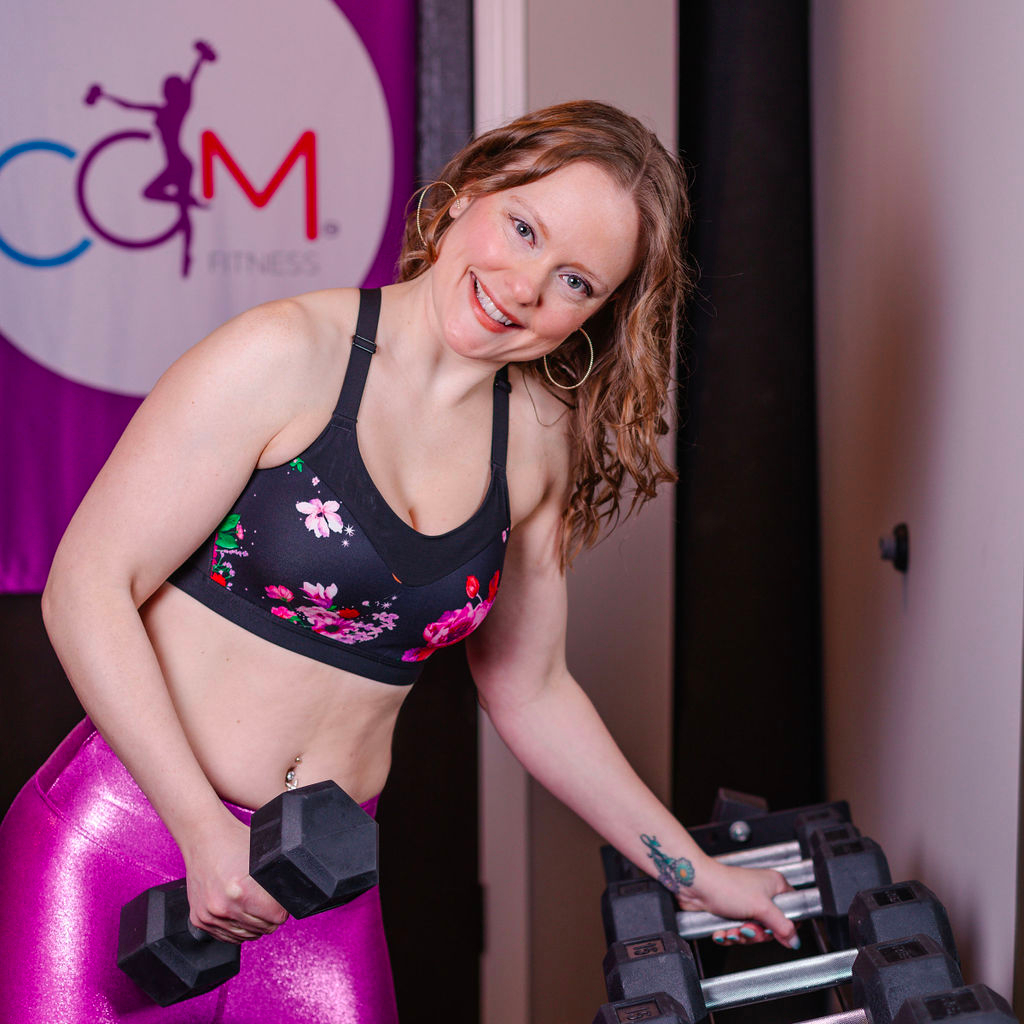
Cara D'Orazio is a certified personal trainer, group fitness instructor, and sports conditioning specialist. She founded C.G.M. Fitness and runs virtual, on-demand, and in-person workout classes and training sessions.
How often should you exercise to lose belly fat?
To burn body fat, and therefore reduce belly fat, D’Ozario recommends doing cardio three to five times a week in your target heart rate zone. She also suggests doing three or four resistance training sessions with weights per week, targeting different muscle groups each day.
Is 30 minutes of exercise a day enough to lose fat?
When it comes to weight loss, it's essential to set realistic goals that suit your lifestyle to set yourself up for success. While 30 minutes a day might not sound like a lot to some, it can be an effective means of shedding weight and staying fit.
There's even scientific research to back this up. In a study published by the American Journal of Physiology, researchers split a group of overweight men into two groups. One group was set the task of exercising for an hour a day while the other group exercised for just 30 minutes.
The results revealed that 30 minutes of daily training for 13 weeks provided the same effective weight loss results as 60 minutes of exercise. The researchers suggested various factors as to why this might be, with one idea being that 30 minutes is more manageable.
As a result, staying motivated and not getting too fatigued was easier, so the men could do more physical activity throughout the day. But that's just a single study, so we spoke to a personal trainer and founder of Sculptrition, Amanda Place, to learn more.
"A 30-minute workout per day is enough to help you lose fat, stay fit, and improve your overall health. If fat loss is your main goal, aim for five 30-minute workouts of moderate to high-intensity activity," Place notes.
She also recommends trying strength training, running, aerobics, and high-intensity interval training (HIIT), like this HIIT workout for fat loss. These sessions are time-efficient but can also raise your heart rate for fat-burning exercise that boosts your metabolism.
Place also notes how it's worthwhile looking at your calorie intake while exercising for weight loss. You don't need to track your calories to lose weight, but some people find it practical to see if they're maintaining a calorie deficit.
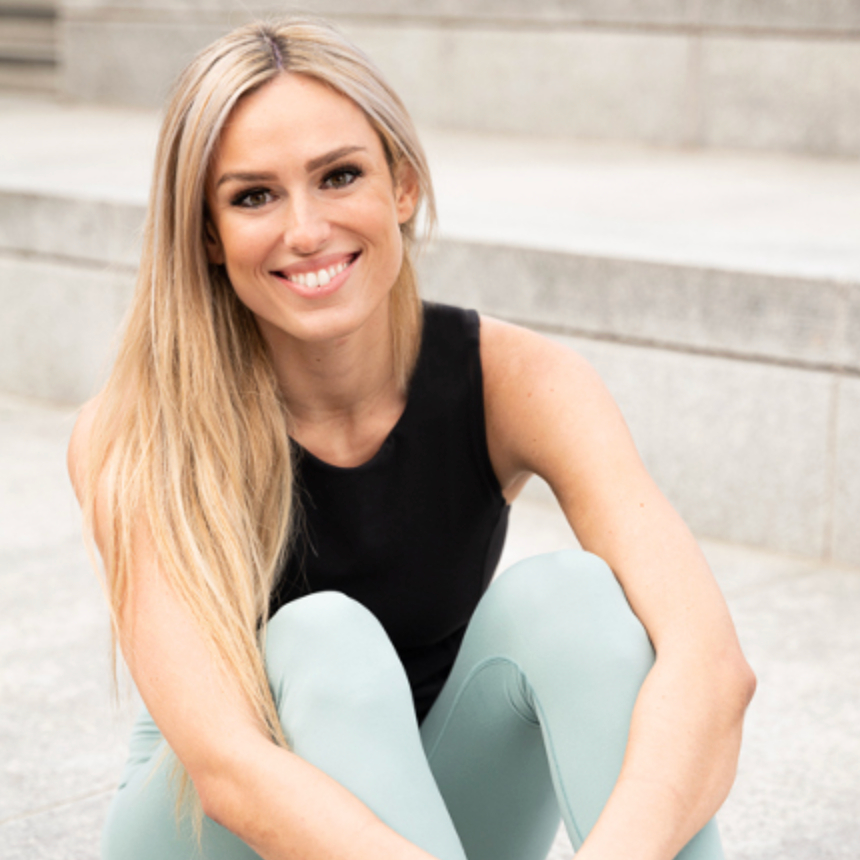
Amanda Place is a qualified personal trainer and founder of Sculptrition. She has trained as a Health and Nutrition coach, an indoor cycling instructor, a teacher for Les Mills Tone and Bodypump, and a seniors' fitness instructor. She enjoys helping people find workout inspiration and achieve sustainable weight loss.
What exercise burns fat fastest?
Although all exercise can burn energy — from walking through to high-intensity workouts — some training styles are more effective at promoting fat loss. Traditionally, people have suggested cardio exercise, like running or cycling.
You can burn calories (a measure of energy) and these cardio-focused workouts often come up when comparing weight loss vs fat loss, but they are generally more effective at helping you lose weight, which is a total reduction in mass, rather than fat alone.
Workouts like this HIIT workout for fat loss, which blend high-intensity cardio with bodyweight moves, are some of the most effective for boosting your metabolism and make an immediate impact on your ability to burn fat.
But to burn fat effectively and sustainably, you also want to build or maintain muscle mass, too, as larger muscles require more energy. High-intensity resistance training (HIRT) combines HIIT and muscle-building exercise to get the best of both worlds.
This is backed up by a study in the Journal of Translational Medicine, which found that HIRT increases your metabolism and lowers your respiratory rate compared to traditional weights training. And, as the sessions are shorter, it's easier to make it a regular habit.
It's important to note that you should always aim to lose fat safely; crash diets and overtraining can make you feel fatigued and may lead to other health complications. If you're new to exercise and want to lose weight, always speak to a medical professional before starting.

James is a London-based journalist and Fitness Editor at Fit&Well. He has over five years experience in fitness tech, including time spent as the Buyer’s Guide Editor and Staff Writer at technology publication MakeUseOf. In 2014 he was diagnosed with a chronic health condition, which spurred his interest in health, fitness, and lifestyle management.
In the years since, he has become a devoted meditator, experimented with workout styles and exercises, and used various gadgets to monitor his health. In recent times, James has been absorbed by the intersection between mental health, fitness, sustainability, and environmentalism. When not concerning himself with health and technology, James can be found excitedly checking out each week’s New Music Friday releases.